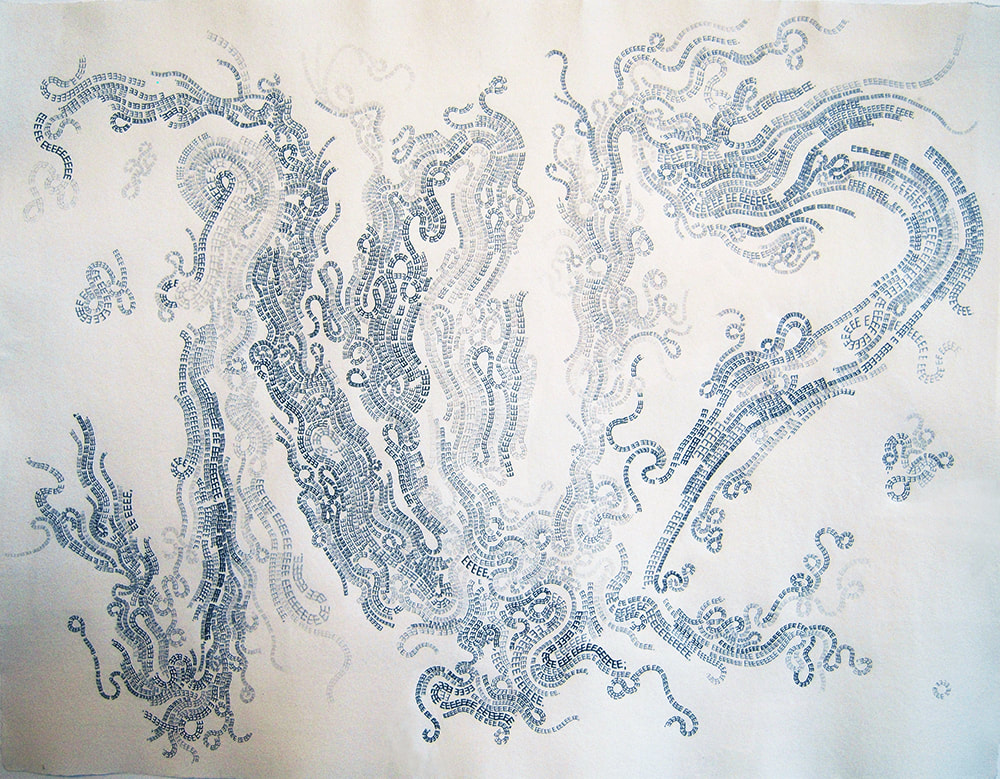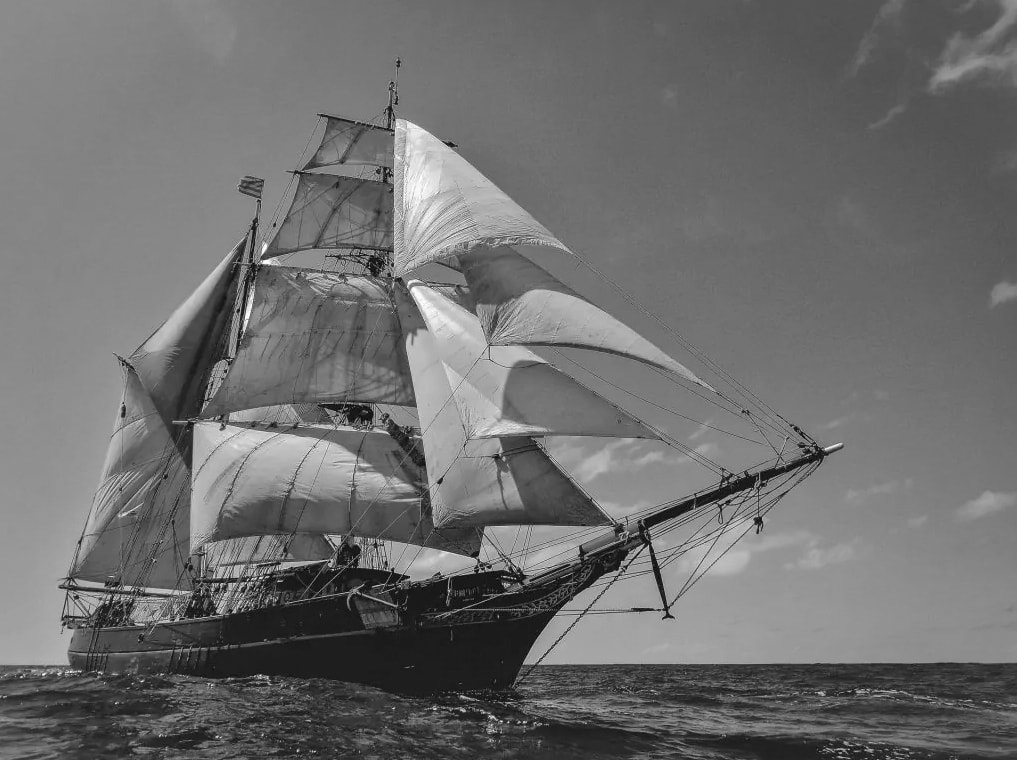|
10/9/2022 No 3Do you have a dream that has been around for a long time? Or can you think of one, that you seem to have forgotten? The reappearing dream To go on a two or three mast sail boat onto the ocean, is a dream I carry within me since a child, from when I played pirate, building imaginary ships in the woods. I carried it into young adulthood and now it feels like a natural part of me. I have not gone yet. I had signed up for a turn to the Caribbean in 2020, but the pandemic interfered. Recently when meeting a friend at a bar in Berlin, I had a glass of special red wine from the Languedoc region in France, brought by the Tres Hombres brigantine via Denmark to the Netherlands, then by post to Berlin. It was the third time, that I heard about this sailing ship Tres Hombres, named after three friends who started a clean shipping movement in 2007. This engine-less brigantine transports organic cargo, like rum, cocoa, coffee, honey & canned fish, between South, Central and North America and Europe, promoting alternative sail-powered cargo shipping worldwide. Again, a reminder that this archetypal dream is still within me, but that it is also inspired by Justin Quinn’s drawing of Melville’s Moby Dick, Chapter 86. It hangs in my bedroom. It is the first piece of art I see in the morning when I get up, and the last drawing I glance at in the evening, before closing my eyes. In Chapter 86, Ishmael tries to describe the tail of the sperm whale, but finds that his words are deficient. The descriptions of the anatomical specifications and shape end up in metaphorical comparisons in art and literature. But he does get specific, defining five great motions of the tail: 1. used as a fin for movement 2. used in battle 3. in sweeping 4. lobtailing 5. in peaking flukes Justin Quinn was one of the artists we kept in our artist roster, when taking over Michael Martin’s Gallery in San Francisco, together with Marina Cain. Intrigued by these most delicate drawings, in which the letter E is used an artistic element, a primary starting point, we quickly learned about Justin’s deeper quest pursuing the transcription of Melville’s epic Moby Dick. He uses the letter E as a surrogate for all letters in the alphabet, presenting a universal, yet unreadable language, and by this exploring the distance between reading and seeing.Here we find a transformation of a classic text into strings of letterforms, differentiated by specific chapters. In the drawing Chapter 86- or 12,713-times E the labyrinthine and spiraling compositions easily remind of the movement of water, getting swirled, spiraled and pushed by the enormous strength of the whale’s tails. “Real strength never impairs beauty or harmony, but it often bestows it;and in everything imposingly beautiful, strength has much to do with the magic.” from Chapter 86, Herman Melville, Moby Dick. Besides seeing the moving water though, I find the fainter strings of letters so beautiful. To me they suggest the fleeting moment, that time is in constant flux, and that all things, at some point, disappear to make space for the new. If I imagine a timely sequence to the pronounced and fainting forms of Es in the drawing, is it 30 seconds? a minute? two or three? I went whale watching several times. Of course, it’s a whole different perspective from what Ishmael observed up from the mast. And then there is today's sonic landscape, certainly so different from the time Melville wrote Moby Dick (1851). Back then, I imagine the sounds of sails fluttering in the wind, of waves hitting the wooden sides and bow of the ship, maybe some talking, mumbling, yelling or singing by sailors, maybe them scrubbing the boat… but certainly no loud engines of several whale watching boats meeting at the hotspots with screaming tourists going ‘Ah’ and 'Oh’ and a biologist, whose voice reverberates over the water, explaining what a whale might be doing and why. The older sonic landscape seems inherent in Justin’s drawing. It calms me. Maybe that’s why I intuitively hung it in my bedroom. SARDE IN SOAR 1991. My girlfriend Anja and I decided that we want to see Venice. We booked an overnight train and a hotel, all without internet. Back then, one had travel guides in form of a book. With such, I prepared myself to discover various aspects of Venetian culture and history. Yes, food was already a sincere interest of mine, and in this travel guide, I read with excitement about the history of a Venetian dish called sarde in saor, along with a recipe. Sarde in saor was a method of preserving sardines in order to keep food on board lasting as long as possible. Sardines, fried in oil and deglazed with vinegar, together with onions prepared the same way, were layered in terracotta containers. It is said, that as time passed, the recipe was refined and raisins were added to help with digestion and to sweeten mouth and breath of its eaters. Modern recipes call for pine nuts, which I think turn this sailor food into very elegantly tasting dish. Because sarde in saor was eaten often long time after the moment it was prepared, the savored taste and aroma is of a preserved product. Today, when preparing sardines in saor, one supposed to let the dish settle for at least one day. After the trip in Venice, I made this dish during hot Berlin summers. I got the sardines at the Turkish market in Kreuzberg. We would get a bottle of nice Chardonnay, a fresh baguette and head out for a picnic at the lake. What a precious culinary memory! If you are somewhere in the world, where warm weather kisses a gorgeous waterfront, be it lake, beach, or marina, there is nothing nicer and tastier then savoring sarde in saor with some friends. SARDE IN SOAR - RECIPE INGREDIENTS
INSTRUCTIONS
Comments are closed.
|
|
|
Kit Schulte
Modern German Food
|


